Schaulust
11 June – 18 July 2015
June 11, 2015 6-9 pm

Charlie Billingham
Touche Éclat, 2015
Oil on Linen, 75 x 60 cm
Touche Éclat, 2015
Oil on Linen, 75 x 60 cm

Charlie Billingham
Deep and Learned, 2015
Oil on Polyester, 220 x 180 cm
Deep and Learned, 2015
Oil on Polyester, 220 x 180 cm

Charlie Billingham
Scopophilia, 2015
Oil on Linen, 180 x 150 cm
Scopophilia, 2015
Oil on Linen, 180 x 150 cm

Charlie Billingham
The Show Must Go On, 2015
Oil on Linen, 180 x 150 cm
The Show Must Go On, 2015
Oil on Linen, 180 x 150 cm

Charlie Billingham
In Bloom (detail), 2015
Oil on Linen, marble, brass, steel, 18th century Delftware ceramic, fresh cut flowers, water
147 x 80 x 60 cm
In Bloom (detail), 2015
Oil on Linen, marble, brass, steel, 18th century Delftware ceramic, fresh cut flowers, water
147 x 80 x 60 cm

Charlie Billingham
In Bloom, 2015
Oil on Linen, marble, brass, steel, 18th century Delftware ceramic, fresh cut flowers, water
147 x 80 x 60 cm
In Bloom, 2015
Oil on Linen, marble, brass, steel, 18th century Delftware ceramic, fresh cut flowers, water
147 x 80 x 60 cm

Charlie Billingham
Enlightenment, 2015
Oil and Acrylic on Linen, 180 x 150 cm
Enlightenment, 2015
Oil and Acrylic on Linen, 180 x 150 cm

Charlie Billingham
Curtains Up, 2015
Oil and Acrylic on Linen, 180 x 150 cm
Curtains Up, 2015
Oil and Acrylic on Linen, 180 x 150 cm

Charlie Billingham
Post Horn, 2015
Oil on Linen, brass hinges, 200 x 280 cm
Post Horn, 2015
Oil on Linen, brass hinges, 200 x 280 cm

Charlie Billingham
Mouthpiece (detail), 2015
Oil on Linen, woven tapestry, gesmonite, acrylic paint
488 x 300 cm
Mouthpiece (detail), 2015
Oil on Linen, woven tapestry, gesmonite, acrylic paint
488 x 300 cm

Charlie Billingham
Mouthpiece, 2015
Oil on Linen, woven tapestry, gesmonite, acrylic paint
488 x 300 cm
Mouthpiece, 2015
Oil on Linen, woven tapestry, gesmonite, acrylic paint
488 x 300 cm

Charlie Billingham "Schaulust"
Installation view at Supportico Lopez, Berlin 2015
Installation view at Supportico Lopez, Berlin 2015

Charlie Billingham "Schaulust"
Installation view at Supportico Lopez, Berlin 2015
Installation view at Supportico Lopez, Berlin 2015

Charlie Billingham "Schaulust"
Installation view at Supportico Lopez, Berlin 2015
Installation view at Supportico Lopez, Berlin 2015
Charlie Billingham "Schaulust"
Installation view at Supportico Lopez, Berlin 2015
Installation view at Supportico Lopez, Berlin 2015
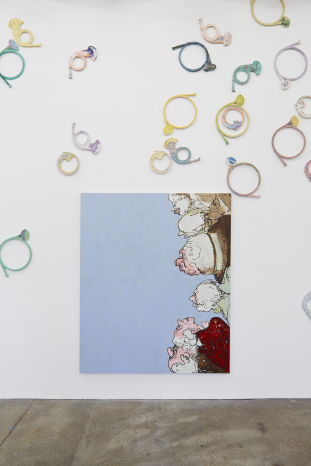
Charlie Billingham "Schaulust"
Installation view at Supportico Lopez, Berlin 2015
Installation view at Supportico Lopez, Berlin 2015
Charlie Billingham "Schaulust"
Installation view at Supportico Lopez, Berlin 2015
Installation view at Supportico Lopez, Berlin 2015
Charlie Billingham "Schaulust"
Installation view at Supportico Lopez, Berlin 2015
Installation view at Supportico Lopez, Berlin 2015
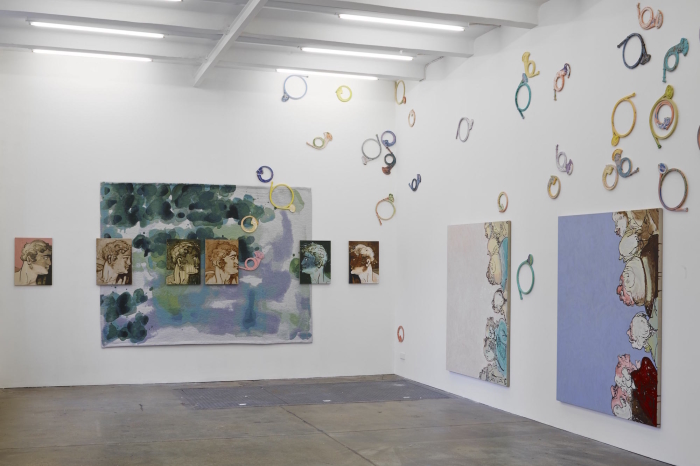
Charlie Billingham "Schaulust"
Installation view at Supportico Lopez, Berlin 2015
Installation view at Supportico Lopez, Berlin 2015
Charlie Billingham "Schaulust"
Installation view at Supportico Lopez, Berlin 2015
Installation view at Supportico Lopez, Berlin 2015